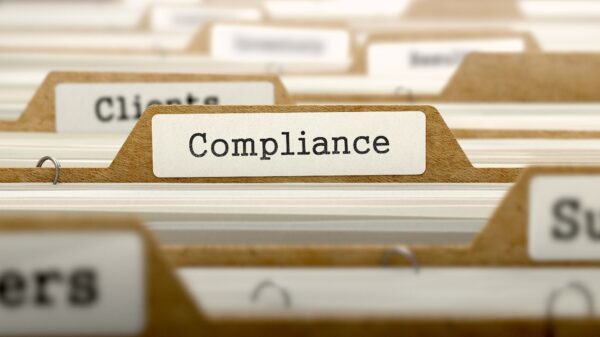The European Union Medical Device Regulation (EU MDR) has brought significant changes to the way medical devices are regulated within the EU. One of the key aspects of compliance under the EU MDR is the requirement for comprehensive and well-maintained technical documentation. This documentation serves as the foundation for demonstrating that a medical device meets all regulatory requirements throughout its lifecycle. Patrick John Gora explores best practices for compiling and maintaining EU MDR technical documentation, focusing on organization and content requirements and ensuring ongoing compliance.
Understanding EU MDR Technical Documentation
Under the EU MDR, technical documentation is crucial for proving that a medical device complies with the regulatory requirements. This documentation includes detailed information on the design, manufacture, and performance of the device. It is essential for obtaining CE marking, allowing the device to be marketed in the EU.
The EU MDR has made technical documentation requirements more stringent compared to the previous Medical Devices Directive (MDD). This has led to the need for medical device manufacturers to update and enhance their documentation to ensure compliance.
Best Practices for Compiling EU MDR Technical Documentation
1. Organize Documentation with a Structured Approach
The organization of technical documentation is fundamental to meeting EU MDR requirements. A structured and well-organized approach ensures that all necessary information is easily accessible and can be quickly retrieved for audits or inspections. Here are some tips:
- Follow the EU MDR Annex II Guidelines: Annex II of the EU MDR provides a detailed outline of the information required in the technical documentation. Manufacturers should use this as a template to organize their documentation.
- Use a Modular Format: Divide the documentation into distinct sections, such as device description, design and manufacturing information, clinical evaluation, risk management, and post-market surveillance. This modular format helps in maintaining clarity and ensures that updates can be made to specific sections without disrupting the entire document.
- Implement Version Control: Keep track of all changes made to the technical documentation. Version control ensures that the latest information is always available and that historical changes can be reviewed if necessary.
2. Include Comprehensive Content
EU MDR technical documentation must be detailed and thorough. The content should provide complete and accurate information about the device. Key content areas include:
- Device Description: Provide a detailed description of the device, including its intended purpose, how it works, and its composition. This section should also include information on the device’s variants and accessories.
- Design and Manufacturing Information: Document the design and manufacturing processes, including design drawings, specifications, and quality control measures. This section should also cover the materials used in the device and their biocompatibility.
- Risk Management: Include a comprehensive risk management file that details the potential risks associated with the device and the measures taken to mitigate them. This is a critical component of EU MDR compliance.
- Clinical Evaluation: Provide evidence of the device’s safety and performance through clinical data. This includes clinical trials, studies, and other relevant data that support the device’s effectiveness for its intended use.
- Post-Market Surveillance (PMS): Outline the plan for monitoring the device’s performance once it is on the market. This section should detail how data will be collected, analyzed, and used to ensure ongoing safety and compliance.
- Labelling and Instructions for Use: Ensure that all labeling and instructions are clear, comprehensive, and compliant with EU MDR requirements. This includes information on how to use the device safely and effectively.
3. Maintain Compliance Through Continuous Updating
Compliance with EU MDR is not a one-time effort. It requires continuous updating and maintenance of the technical documentation to ensure ongoing compliance throughout the device’s lifecycle.
- Regular Reviews and Audits: Conduct regular internal audits and reviews of the technical documentation to ensure that it remains up-to-date and compliant with the latest regulations and standards.
- Stay Informed on Regulatory Changes: The regulatory landscape can change, and it is essential to stay informed about updates to the EU MDR and other relevant standards. Adjust your documentation as necessary to reflect these changes.
- Update Based on Post-Market Data: Use data from post-market surveillance to update the technical documentation. This ensures that the documentation reflects the current understanding of the device’s performance and any newly identified risks.
- Collaborate with Cross-Functional Teams: Maintaining compliance requires input from various departments, including design, manufacturing, quality, regulatory affairs, and clinical teams. Ensure that these teams collaborate effectively to keep the technical documentation accurate and complete.
Compiling and maintaining EU MDR technical documentation is a complex and ongoing process that requires careful planning, organization, and continuous effort. By following best practices, such as organizing documentation in a structured manner, ensuring comprehensive content, and maintaining ongoing compliance through regular updates, medical device manufacturers can meet the stringent requirements of the EU MDR and ensure that their devices remain compliant throughout their lifecycle.
In the ever-evolving regulatory environment, staying proactive and informed is key to achieving and maintaining compliance, thereby ensuring the safety and effectiveness of medical devices in the European market.
